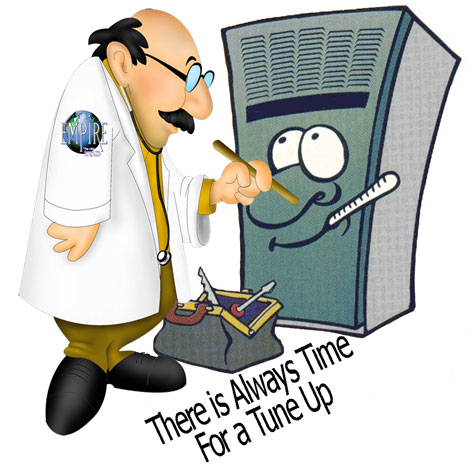
Why is CO2 So Dangerous?
The great danger of carbon monoxide is its attraction to hemoglobin in the bloodstream. When breathed in, carbon monoxide replaces the oxygen which cells need to function. When CO is present in the air, it rapidly accumulates in the blood, causing symptoms similar to the flu, such as headaches, fatigue, nausea, dizzy spells, confusion, and irritability. As levels increase, vomiting, loss of consciousness, and eventually brain damage or death can result.
Where Does CO2 Come From?
Carbon monoxide is a by-product of combustion, present whenever fuel is burned. It is produced by common home appliances, such as gas furnaces, gas clothes dryers, gas ranges, gas water heaters, fireplaces, charcoal grills, and wood burning stoves. Fumes from automobiles and gas-powered lawn mowers also contain carbon monoxide and can enter a home through walls or doorways if an engine is left running in an attached garage.
All of these sources can contribute to a CO problem in the home. If a home is vented properly and is free from appliance malfunctions, air pressure fluctuations or airway blockages, carbon monoxide will most likely be safely vented to the outside. But in today's "energy efficient" homes this is frequently not the case. Tightly constructed/sealed homes can trap CO-polluted air in a home year-round. Furnace heat exchangers can crack, vents can become blocked, inadequate air supply for combustion appliances can cause conditions known as backdrafting or reverse stacking, which force contaminated air back into the home. Exhaust fans on range hoods, clothes dryers and bathroom fans can also pull combustion products into the home.
Is Your Range Hood Not Functioning When Your Heater is Turned On?
If the ducting in your attic is not sealed you could be leaking enough air into your attic to create a vacuum in your home. This vacuum can pull the air backwards through your range hood and backwards through your waterheater flue. This can create a very dangerous CO2 problem in your home.
How Can I Protect Myself And My Family From CO2 Poisoning?
The Consumer Product Safety Commission (CPSC) recommends installing at least one carbon monoxide detector per household, near the sleeping area. It is now California Law to have a CO2 detector installe din your home. Additional detectors on every level of a home and in every bedroom provide extra protection. Choose an Underwriters Laboratories Inc. (UL) listed detector that sounds an audible alarm. You can choose a model that is wired to your home's electrical system, a model which plugs into a standard electrical outlet, or a battery-operated model. Battery-operated carbon monoxide detectors continue to protect even in the event of a power outage. Hardwired AC models, although more costly and difficult to install, reduce the expense of battery replacement but do not offer protection during power outages. Hardwired AC models with battery back-up offer double protection.
Gas appliances should be serviced yearly by a qualified service technician. Stove burners should be cleaned and adjusted to minimize the amount of carbon monoxide produced. Before making changes to a house that might affect the ventilation of fuel-burning appliances, contact your heating contractor. When replacing heating appliances, purchase appliances designed to reduce dangers from carbon monoxide, such as sealed combustion gas furnaces, direct vent gas fireplaces, or induced draft gas water heaters. Electric-powered heating appliances do not produce carbon monoxide.
If your carbon monoxide detector sounds, first make sure it is your CO detector and not your smoke detector. The latest generation of carbon monoxide detectors listed with UL will be marked "carbon monoxide detector" in a contrasting color on the cover. Some detectors feature a warning alarm which will sound before the full (continuous) alarm. If your detector is in warning alarm, carbon monoxide is beginning to accumulate. It is important to locate and eliminate the source of CO before the condition worsens. A trained HVAC contractor or appliance service technician can inspect your home to determine the cause of carbon monoxide build-up.
If your detector is in full alarm and any member of the household is experiencing symptoms of poisoning, call your local fire department immediately! Remember that infants and children may be affected more quickly by carbon monoxide. Be sure to see if they are exhibiting symptoms. If no one is feeling symptoms, ventilate the home with fresh air, turn off all potential sources of carbon monoxide and have a qualified technician inspect your combustion appliances.
 In addition to installing carbon monoxide detectors, consumers should regularly inspect and service potential problem sources of carbon monoxide. In addition to installing carbon monoxide detectors, consumers should regularly inspect and service potential problem sources of carbon monoxide.
If your forced air furnace activates your carbon monoxide detector turn it off, air out the house and call a professional HVAC company, preferably us here at 911furnace.com and we find and fix that problem for you. (The picture to the left is a Carrier heat exchanger that has suffer a catastrophic failure)
|